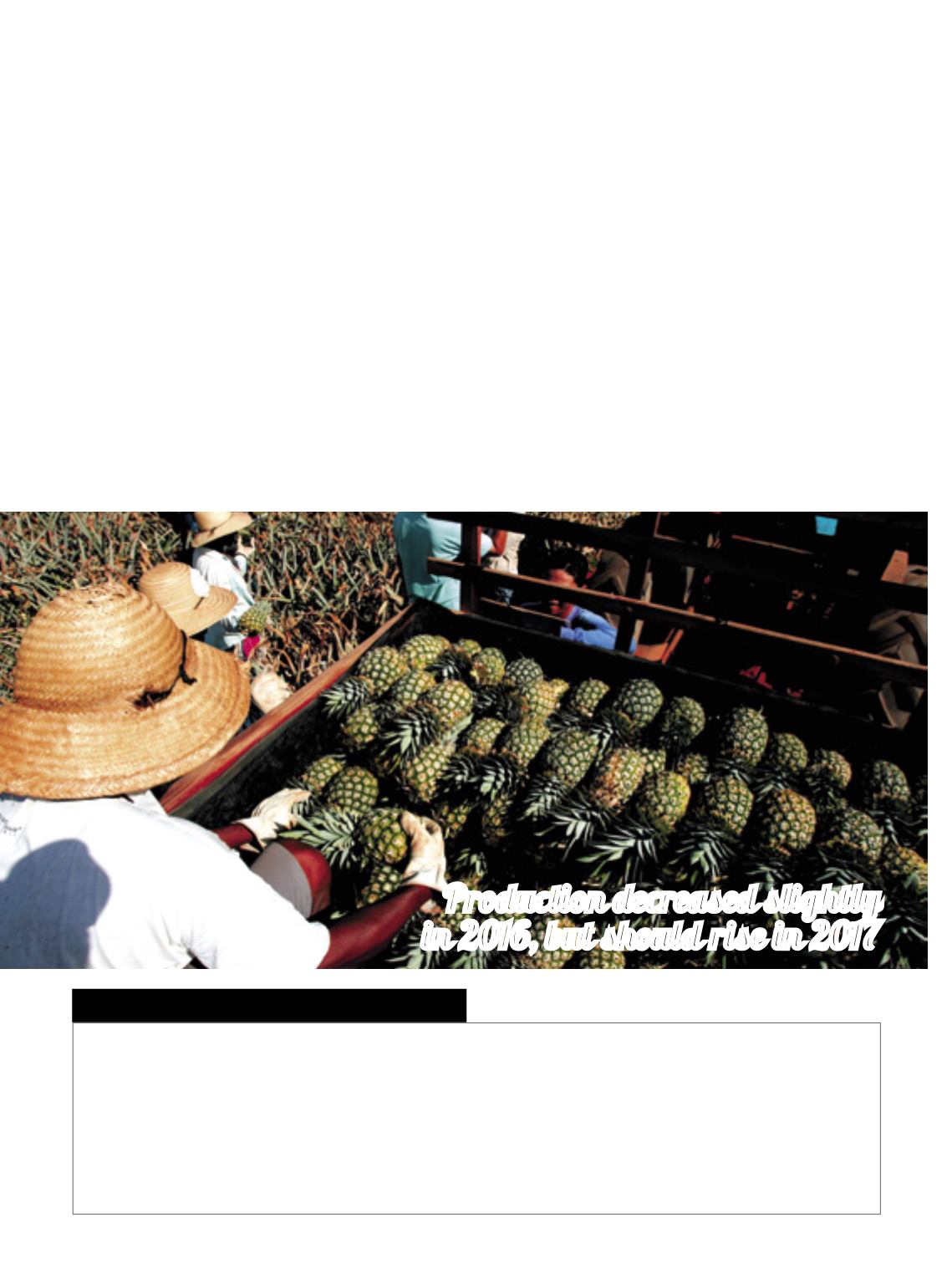
30
Sílvio Ávila
I
f there are thorns in a pineapple, which
need to be removed when they are in-
gested, though these thorns may turn
into an element of decoration, they do
not seem to be present in the real life of
The Brazilian market of pineapples has been rather favorable,
stresses José Souza, researcher at Embrapa Cassava and Fruticul-
ture. An analysis of the performance over the past 15 years (2002-
2016), shows considerable increases in average prices fetched,
some 7.44%a year, “Attesting to the attractive exports of this fruit”.
From2015 to2016, exports soared10.6%, reachingUS$ 2,579.09/t,
while total revenue rose48.2%andexportedvolume, 34.1%.
Latest export prices of pineapple juice were the highest
fetched by Brazilian pineapple juice exports since 2002, ac-
cording to the researcher’s records. On that year (2016), sales
of Brazilian juice were destined for 19 countries. The most im-
portant, in volume, were as follows: Holland (51.5%), Argenti-
na (12.6%). Belgium (8.4%), Switzerland (6.7%) and Italy (6.0%),
and 14.9-percent had other destinations. The most used trans-
portation was by sea (83.2%) and by road (16.8%, option used
for sending the pineapples to South Cone countries).
n
n
n
High values
Pineappleproductive
segmentbetsonbigger
plantedareas,withthe
nowhighlyattractive
domesticmarketfor
freshfruitandforeign
marketforjuice
Cutting
thorns
Production decreased slightly
in 2016, but should rise in 2017
the fruit, considering the planting inten-
tion observed by the Brazilian Institute of
Geography and Statistics (IBGE) in its re-
cent surveys. In 2016, while the produc-
tion numbers show a slight drop, the indi-
cation of planted area is very positive: it is
supposed to have increased 47.3-percent,
according to the official source. This trend
seems to be the real situation in almost all
main producing states.
The explanation for a great part of this
expansion could lie in the domestic mar-
ket of fresh fruit and in juice exports, which
continuequite attractive, according to José
Souza, researcher at Embrapa Cassava and
Fruticulture, based in Cruz das Almas, in
Bahia. Informationonbigger areasdevoted
to pineapples in the Country, although the
production cycle of this fruit is 18 months,
signal, according to him, a bigger produc-
tion volume in 2017 compared to the previ-
ous year, when the volume dropped slight-
ly in size, according to the initial numbers.
IBGE’s estimate for 2016, published in
December, indicated that, compared to
2015,productiondropped2.5%,revenuefell
1.7% and the harvested area, 0.8%. These
variations could result from the occurrence
of weather problems, pests and diseases,
says Souza, registering that the national
behavior of the crop presents some weath-
er oscillations. Over the past 15 years (2001
to 2015), average annual growth rates were
positive: harvestedarea (0.6%), production
(1.3%) and productivity (0.7%).


